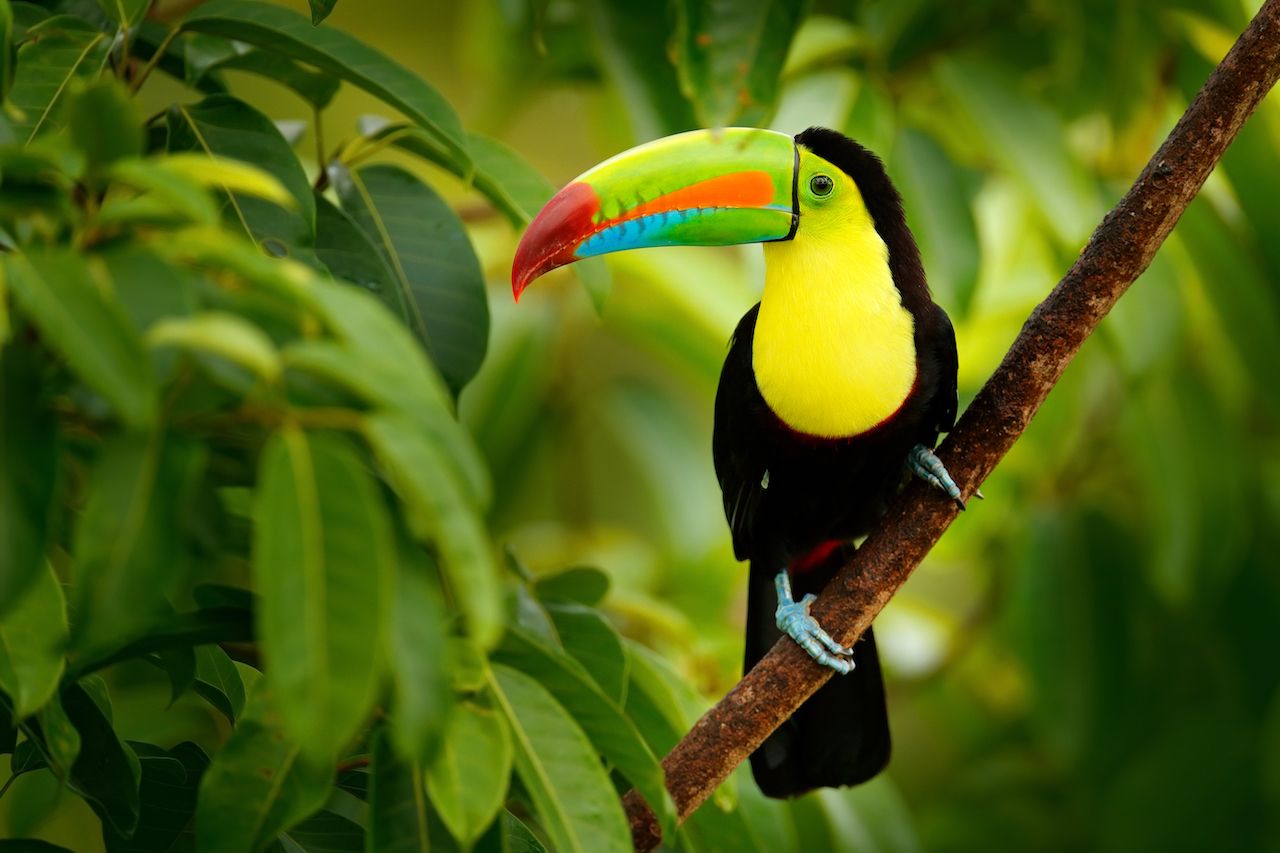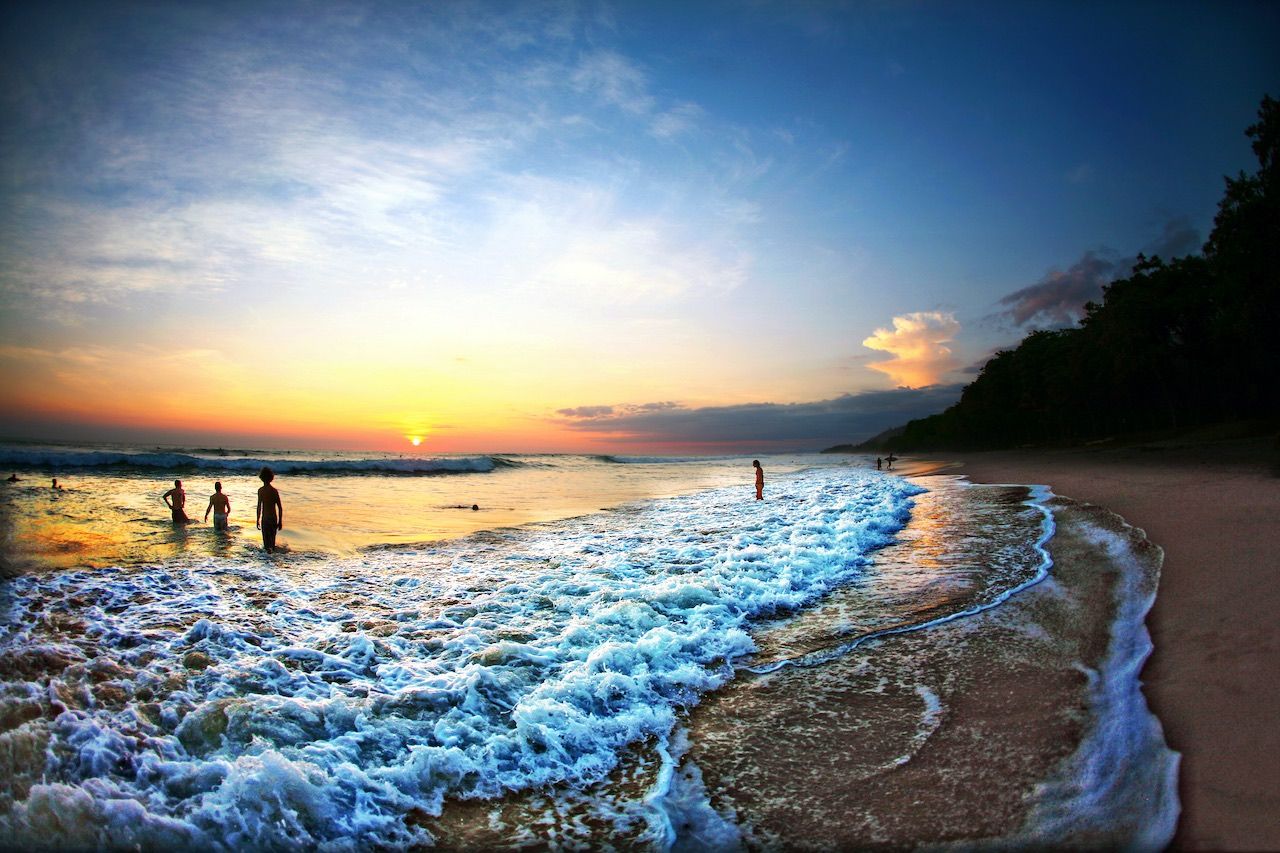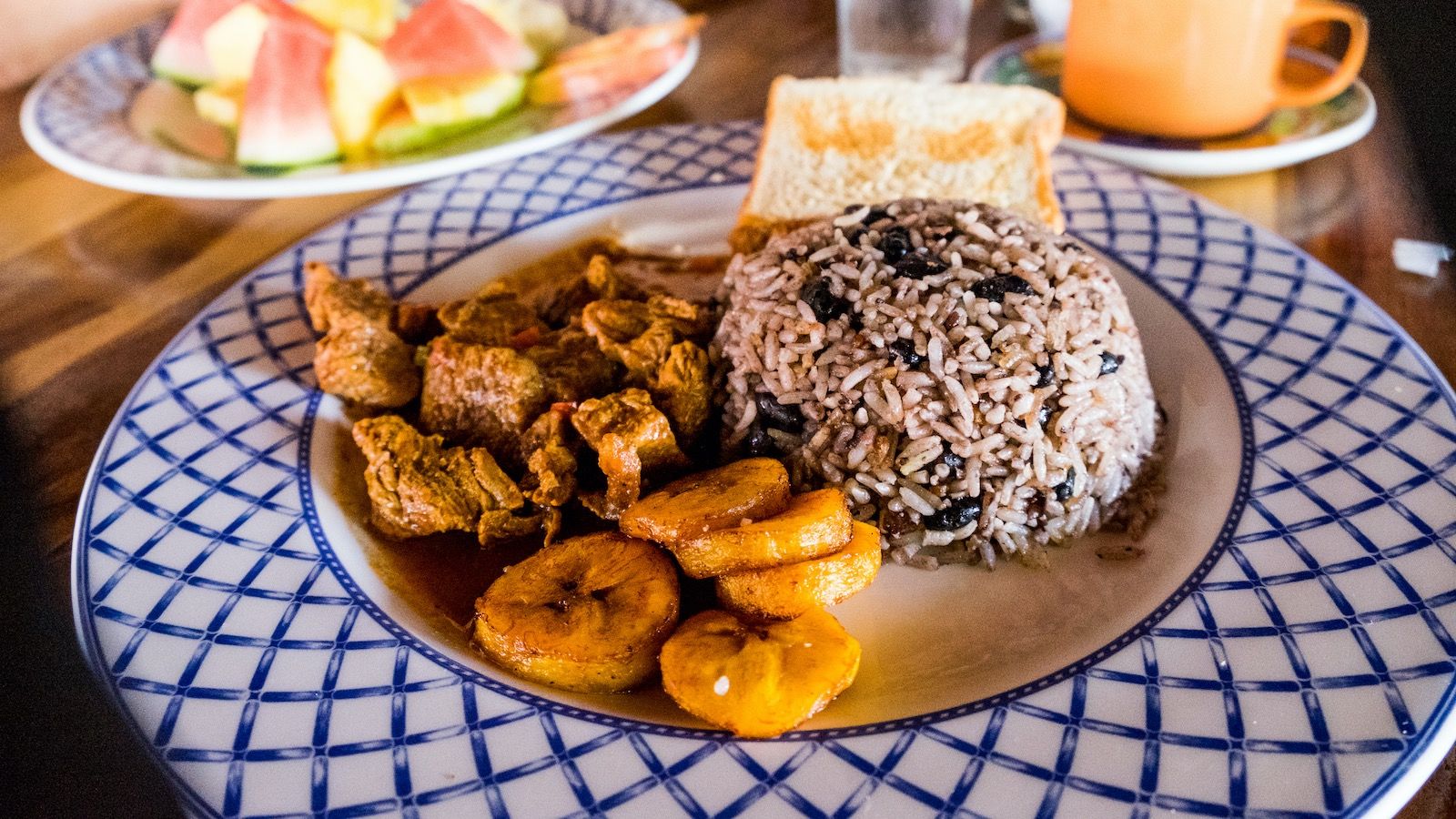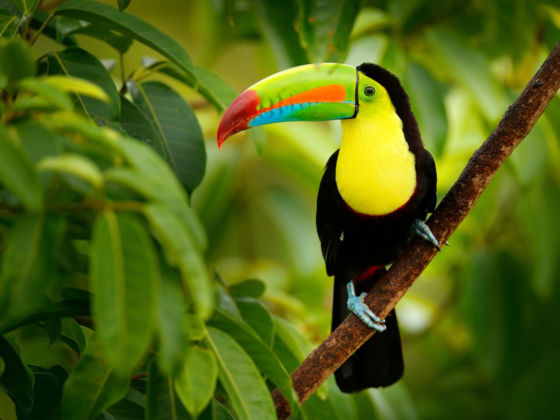WHEN IT COMES to Costa Rica, you’ve probably heard about “pura vida.” You probably know the country’s biodiversity is off the charts, and maybe you even know that they got rid of their army long ago. But beyond this basic info, what do you really know about the land of the Ticos? Grab a cup of your favorite Costa Rican coffee — here are 11 facts that will totally surprise you.
1. The national animal isn’t what you’d expect.
Monkeys are among the most common mammals in the country, but it’s not the capuchin, the spider, the squirrel, or the howler that graces Costa Rica’s throne of “national animal.” Instead, it’s the white-tailed deer. Yep, Bambi. There’s even a deer on the 1,000 colones bill.
Fret not. Costa Rican wildlife doesn’t share much else with the Midwest. You’re probably more likely to see one of those mischievous monkeys than a demure deer — they’re skittish in the jungle. Get to places like Manuel Antonio National Park (mind your bags — the capuchins and coatimundis are curious) or Corcovado National Park on the Osa Peninsula, and you’ll be right in the thick of it. Wildlife, that is.
2. Zoos and wildlife habitats look different here.

Photo: Ondrej Prosicky/Shutterstock
Costa Rica is big on biodiversity and environmental conservation. In 2013, the Minister of Environment led a movement to “reinforce the idea of interacting with biodiversity in botanical parks in a natural way.” The idea was that no animal would be in captivity, unless it was being rescued or saved.
The first go at setting all animals free didn’t make it through the courts, but the awareness built by the effort led to zoos remodeling and creating larger, more natural habitats. Rehabilitation centers have sprung up across the country, nurturing a variety of animals (from anteaters to sloths to jaguars) back to health and releasing them into the wild.
3. You don’t have to choose one coast over the other…
Spend your morning with the Caribbean sunrise, surfing the Salsa Brava (the infamous long right wave), and then hightail it to Manuel Antonio for a sunset on the Pacific and some downtime with a party of white-faced monkeys — all in the same day.
Granted, the drive will take you about seven hours, but as long as you start early (and make time for the interesting stops along the way, like the Poás Volcano and the trippy gardens in Zarcero), you’ll be sun chasing all day.
4. …or worry about when to visit.

Photo: Shutterstock/NK
There’s no real “bad time to visit” Costa Rica. True, you’ll run into more tourists December through April, but the rest of the year is when the country’s greens really start popping. It’ll be wetter, but the country is in full bloom — and there are fewer people around to share it with.
And in case you’re wondering, the weather doesn’t really play by any set of rules. San José’s Central Valley might be 72 degrees with a breeze, while the highlands will be much cooler. Areas in the Northern Plains, like Guanacaste and the Nicoya Peninsula, will be drier and hot. Even though the country is relatively small, you’re going to find half a dozen weather patterns from ocean to mountain to sea and back again.
5. You’ve definitely tasted Costa Rica’s “golden grain.”
Costa Rica was built on coffee. El grano de oro — the “golden grain,” as it’s known here — fueled much of the country’s early development. In the 1800s, prospective farmers even got free land if they planned to use it to cultivate coffee. The morning bean was a major source of funds for the National Theatre in San José, and coffee continues to be a common crop — and source of revenue — today.
On the street, you’ll hear it being called yodo or yodito (“a lil’ iodine”). The most traditional (and best, in my opinion) method of preparation is to brew using a chorreador, a pour-over that utilizes a fine mesh filter pouch hung from a wooden frame. Coffee varieties differ in flavor nuance depending on elevation and soil composition, though most have a characteristic silky body, running the gamut from crisp fruitiness to smoky chocolate.
6. Eight indigenous groups call Costa Rica home.
The Boruca, Bribri, Cabécar, Guaymí, Huetar, Maleku, Matambú, and Térraba are all recognized by the government, and slowly but surely these groups are reclaiming their rights, lands, languages, and cultural heritage. The Indigenous Law was passed in 1977, and in 2007 Costa Rica also signed the United Nations Declaration on the Rights of Indigenous Peoples.
Today, only about 65,000 Costa Ricans identify as having indigenous roots, but the fact that this is less than 2% of the population isn’t stopping their traditions from carrying on. When you visit, check out the three-day Fiesta de los Diablitos (Festival of the Little Devils) over New Year, or make time to see the Kekoldi Indigenous Reserve — near Cahuita, on the Caribbean Coast — for a lesson in chocolate making and to see its green iguana re-population project firsthand.
7. Gallo pinto is the stuff of legend.

Photo: Shutterstock/Bryce Jackson
Many countries around the world claim to have invented rice and beans. Ignore them.
Costa Rican legend — or one of them, at least — attributes gallo pinto, what amounts to a national dish, to Don Bernabé. Story has it that he was saving his three prized hens for the town’s Christmas fiesta. The star of the bunch was his gallo pinto, or spotted hen. As gossip about the birds circulated via the coconut wireless, a crowd began descending on Don Bernabé’s place. He quickly whipped up an homage to his spotted hen’s appearance by frying up mountains of white rice and black beans — to feed, or perhaps distract, the masses.
Regardless of its origins, it’s safe to say what distinguishes Costa Rican gallo pinto from its counterparts elsewhere boils down to one pivotal ingredient: Salsa Inglesa, the country’s signature tangy, savory sauce. On Costa Rica’s Caribbean coast, coconut milk and chilies are incorporated into the dish as well, making it essentially two different dishes.
8. Costa Rica’s Calypso King still lives in Cahuita.
Walter “Gavitt” Ferguson, known simply as Gavitt, is the Calypso King of Cahuita. For decades he flew under the radar, practicing on borrowed guitars and selling his music on cassette tapes to tourists near his home, just outside of Cahuita National Park.
Then, in 2002, Gavitt was offered a professional recording opportunity by Papaya Music in San José. He declined to travel to the capital, so Papaya Music packed up their equipment and headed to Cahuita. They set up shop in Gavitt’s house, using mattresses and rugs to insulate the recording room (muffling the sounds of his pet parrots and dogs). The challenge proved fruitful, and Babylon became Gavitt’s first album to reach national — and international — acclaim.
Calypso’s mainstream recognition has increased ever since. In 2012, the Costa Rican government passed an executive decree that gave special recognition to Calypso music as part of the country’s cultural and historical identity.
9. Alabama Quakers helped develop the Monteverde Cloud Forest.

Photo: Shutterstock/Simon Dannhauer
Today, the Monteverde Cloud Forest is a hub of biodiversity and wildlife, home to over 2,500 of species of plants alone, and a big tourist draw via the Monteverde Cloud Forest Reserve. But back in 1951, parts of this area looked more like a Quaker village. Eleven US families had left their home state of Alabama in search of a pacifist lifestyle in Costa Rica, and they found their ideal setting in what was then known as Montañosa. They lived off the land, used preexisting structures, and got on with their simple lives.
By the 1970s, the community became more active in environmental conservation, fueling the ecotourism development in the area (nope, ecotourism is not a new thing!). Fast forward to now, and the Monteverde Cloud Forest tops visitors’ bucket lists. You can meander through the forest on suspended skywalks or — if you’re feeling more adventurous — take a zipline tour through the canopy mist clinging to the mountainside. If you’re really lucky, you might even be able to sneak a peek at the stealthy quetzal, one of the most difficult-to-spot birds in the area, revered for its resplendent plumage that’s a mix of iridescent turquoise and popping reds.
10. “Soda” is not interchangeable with “pop” here.
Although you can get a Fanta at a “soda,” these joints are plenty more than that. Soda is the generic term for your hole-in-the-wall eatery serving up typical Costa Rican fare, and you’ll see them peppered throughout towns across the country. The usual suspects on the menus include gallo pinto (see above), casados (meat, rice, black beans, and a veggie), and patacones (crispy, salty plantains).
But more importantly, don’t forget to wash all your noms down with one of the many naturales or refrescos on the drink menu. These natural fruit juices come in tons of flavors, highlighting the country’s abundance of tropical fruits. Papaya, pineapple, and blackberry are standard favorites, but watch out for the elusive tastebud-banger cas, a seasonal green mango version of the drink — it’ll make you pucker and yet crave more 100% of the time.
11. Over 100,000 turtles can take over Ostional’s beaches in a single day.

Photo: Shutterstock/Irina K
During Costa Rica’s arribada (“mass arrival”), as many as 100,000 Olive Ridley turtles come ashore on Ostional National Wildlife Refuge’s isolated beaches, leaving behind as many as 10 million eggs. Arribadas occur year-round, but the peak is during the green season.
In recent years — especially after 2015 — Ostional has had to implement stricter regulations, as the arribadas draw throngs of tourists curious to experience the natural spectacle. If you come, simply keep your impact in mind, and leave Costa Rica as beautiful as you found it.
This post is proudly produced in partnership with Visit Costa Rica.

